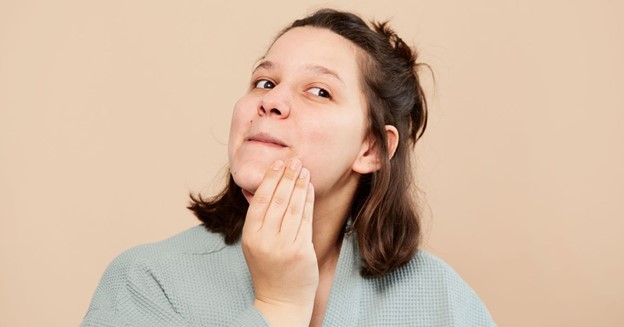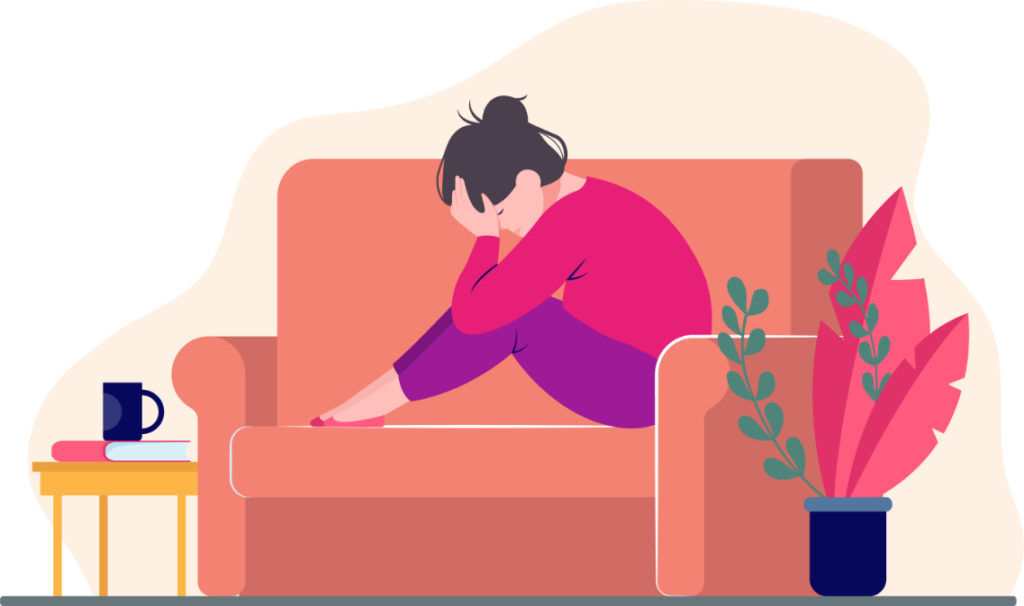Hey there! If you’re someone who struggles with breakouts and skin flare-ups around your period, you’re not alone.
Hormonal acne is extremely common in women, but the good news is there are some tips and tricks you can use to help minimize breakouts during your menstrual cycle.
In this blog, we’ll walk through how to navigate your cycle week by week to prevent breakouts, reduce inflammation, and support skin health at every stage. Get ready to say goodbye to period pimples and hello to consistently fresh-faced skin!

Understanding Your Menstrual Cycle and How It Affects Your Skin
Your menstrual cycle directly impacts your hormone levels, which in turn affects your skin. By understanding how your cycle influences breakouts and clarity, you can make small changes to get your clearest complexion.
Around ovulation, your estrogen levels peak, increasing oil production and the chance of breakouts. To counteract this, use a lightweight moisturizer, wash your face twice a day, and spot-treat any blemishes.
During your period, progesterone dominates, often causing inflammation and irritation. Drink plenty of water, use a gentle cleanser, and avoid harsh skincare actives. An ice pack can reduce irritation from cystic acne.
The week after your period, hormone levels stabilize and your skin often clears up. Take advantage of this time to get medical facials or do at-home peels to boost your glow.
By charting your cycle and making minor adjustments, you’ll be navigating your hormones and achieving consistently clear skin. Be patient and understand that some fluctuations are normal. With regular self-care, you can sync your skincare to your cycle for your best complexion yet.
Tips for Caring for Your Skin During Different Phases of Your Cycle
Your skin goes through changes along with your cycle, so it’s important to adjust your routine accordingly. Here are some tips to keep your complexion clear during each phase:
- During your period, hormonal changes can lead to breakouts. Use an over-the-counter topical treatment containing benzoyl peroxide or salicylic acid to keep pimples at bay. You may also want to switch to oil-controlling face washes and masks.
- In the follicular phase following your period, your estrogen levels start to rise. Increase hydration by using a richer moisturizer and facial oils. Exfoliate gently to remove dead skin cells.
- Around ovulation in the middle of your cycle, progesterone dominates. You may experience oiliness and small breakouts. Use medicated pads or toners containing glycolic or lactic acid to prevent acne. Limit excess sebum with matte primers and powders.
- The luteal phase is when PMS hits. Hormones fluctuate, often causing irritation, sensitivity, and cystic acne. Soothe your skin with hydrating and brightening sheet masks. Apply hydrocortisone cream to reduce inflammation.
By tailoring your skincare regimen to your cycle, you can alleviate issues as they come up. And remember, every woman’s experience is different, so find what works for you based on how your unique hormone levels impact your skin month to month. With consistent care and by making the right adjustments, you’ll be glowing all cycle long.
Creating a Customized Skincare Routine for Each Phase of Your Cycle
Creating a customized skincare routine tailored to your menstrual cycle can help you achieve consistently clear skin. Your hormone levels fluctuate throughout the month, which can impact your complexion. Focusing on gentle, soothing products during certain times will support your skin’s needs.
- Around your period (days 1-5), your estrogen levels drop, which can lead to breakouts. Use a lightweight moisturizer and spot treatment with benzoyl peroxide or salicylic acid to clear up any blemishes. An oil-control toner may also help reduce excess oil production.
- During your follicular phase (days 6-14), your estrogen starts to rise again as an egg develops. Exfoliate 2-3 times a week to remove dead skin cells. Use a vitamin C serum to boost collagen production and brighten your complexion.
- Ovulation (days 15-17) brings a spike in estrogen that can cause minor breakouts. Stick to a simple routine of gentle cleanser, toner, moisturizer, and SPF. Limit the use of harsh actives until your hormone levels stabilize again.
- The luteal phase (days 18-28) has dropping estrogen and rising progesterone. Increase hydration with a thicker night cream. Use retinol 2-3 times a week to speed cell turnover and keep skin clear.
By customizing based on where you are in your cycle, you can anticipate and address the changes in your skin. The key is being consistent yet gentle, and avoiding over-stripping or irritating your skin, especially around your period. Keeping a journal to track how your skin reacts at different times can help determine the right products and schedule for you. Be patient through the ups and downs, and know that this too shall pass! Focusing on self-care will help you feel and look your best all month long.
So, there you have it, a few simple tips to help you understand how your menstrual cycle affects your skin and what you can do about it. Paying attention to the natural ebb and flow of your hormones each month can help you feel more in tune with your body and give you the knowledge you need to keep your complexion clear and glowing.
Remember, be gentle with yourself during your period and give your skin a little extra TLC. Stay hydrated, avoid harsh products, and consider using a warm compress to relieve cramps and reduce inflammation. Your skin and your mood will thank you.
Undoubtedly, understanding the connection between your cycle and skin health is empowering and can help you feel confident and comfortable in your skin all month long.







